Membrane Technology Membrane Separation
Commonly used microfiltration, nanofiltration, ultrafiltration and reverse osmosis and other technologies. As membrane technology does not introduce other impurities in the process of treatment, can achieve the separation of macromolecules and small molecules, it is commonly used in the recovery of various macromolecular raw materials, such as the use of ultrafiltration technology to recycle printing and dyeing wastewater polyvinyl alcohol slurry. At present, the main difficulties in promoting the application of membrane technology engineering are the high cost, short life span, easy contamination and scale fouling. With the development of membrane production technology, membrane technology will be more and more applications in the field of wastewater treatment. Industrial Sewage Treatment Equipment Magnetic Separation Technology
Magnetic separation technology
Magnetic separation technology is a new type of water treatment technology developed in recent years that utilizes the magnetic separation of impurity particles in wastewater. For non-magnetic or weakly magnetic particles in water, magnetic inoculation can be used to make them magnetic. Magnetic separation technology for wastewater treatment has three methods: direct magnetic separation, indirect magnetic separation and microbial - magnetic separation. The magnetic technology currently studied mainly includes magnetic agglomeration technology, iron salt co-precipitation technology, iron powder method and ferrite method. Representative magnetic separation devices are disk magnetic separators and high-gradient magnetic filters. At present, the magnetic separation technology is still in the laboratory research stage and can not be applied to actual engineering practice.
Fenton and Fenton-like oxidation
The typical Fenton reagent is catalyzed by Fe2 + H2O2 decomposition generated? OH, which led to the oxidative degradation of organic matter. Due to the long time required to treat wastewater with Fenton process, the amount of reagent used is large, and excess Fe2 + will increase the COD in the treated wastewater and cause secondary pollution. In recent years, people introduced UV light and visible light into Fenton system and studied the use of other transition metals instead of Fe2 +. These methods can significantly enhance the oxidative degradation of organic substances by Fenton reagent, reduce the dosage of Fenton reagent and reduce the processing cost, collectively referred to as Fenton reaction. The Fenton method has the advantages of mild reaction conditions, simple equipment and wide application range; it can be applied as a separate treatment technology or combined with other methods such as coagulation sedimentation, activated carbon, biological treatment and the like, Degradation of organic wastewater pretreatment or depth treatment methods.
Ozone oxidation
Ozone is a kind of strong oxidant, which is fast and easy to use when reacting with reduced pollutants. It does not produce secondary pollution. It can be used for disinfection, color removal, deodorization, organic removal and COD reduction of sewage. Ozone oxidation alone, high cost, high processing costs, and its oxidation selectivity, for some halogenated hydrocarbons and pesticides, such as relatively poor oxidation. Therefore, in recent years, related technologies have been developed to improve the efficiency of ozone oxidation. The combination of UV / O3, H2O2 / O3 and UV / H2O2 / O3 can not only improve the oxidation rate and efficiency, but also oxidize the ozone alone Hard to oxidative degradation of organic matter. Due to the low solubility of ozone in water, low efficiency of ozone generation and high energy consumption, it increases the solubility of ozone in water and increases the utilization rate of ozone. Therefore, developing an ozone generator with high efficiency and low energy consumption has become the main research direction.
Wet (catalytic) oxidation
Wet (catalytic) oxidation is carried out under high temperature (150-350 ° C) and high pressure (0.5-20 MPa) using O2 or air as the oxidant (adding catalyst) under the action of the catalyst. The catalytic oxidation of water is in a dissolved or suspended state Of organic or reduced inorganic, to achieve the purpose of removing pollutants. Wet air (catalytic) oxidation can be applied to the treatment of municipal sludge and industrial wastewater such as acrylonitrile, coking, printing and dyeing, and pesticide wastewater containing phenol, chlorocarbon, organic phosphorus and organic sulfur compounds.
Plasma water treatment technology
Low-temperature plasma water treatment technology, including high-pressure pulsed discharge plasma water treatment technology and glow discharge plasma water treatment technology, is the use of discharge directly in aqueous solution to generate plasma, or gas discharge plasma in the active particles into the water, Water pollutants can be completely oxidized, decomposition. The direct pulsed discharge in aqueous solution can be operated at normal temperature and pressure. The oxidative degradation of organic matter can be produced in situ by chemical oxidizing species in aqueous solution without the addition of catalyst during the entire discharging process. This technique is economical and effective for the treatment of low concentration organic matter . In addition, the use of pulsed discharge plasma water treatment reactor technology can be flexibly adjusted form, the operation is simple, the corresponding maintenance costs are lower. Due to the limitation of the discharge equipment, the energy utilization rate of the degraded organic matter in the process is relatively low, and the application of the plasma technology in the water treatment is still in the research and development stage.
Electrochemical (catalytic) oxidation
Electrochemical (catalytic) oxidation technology directly degrades organic matter through anode reaction, or generates hydroxyl radicals (? OH) through anodic reaction, and oxidants such as ozone can degrade organic matter. Electrochemical (catalytic) oxidation includes one-, two-, and three-dimensional electrode systems. Due to the three-dimensional electrode system of micro-electric field electrolysis, currently highly respected. The three-dimensional electrode is filled with granular or other chip-shaped working electrode material between the electrodes of a traditional two-dimensional electrolytic cell and charges the surface of the charged material to become the third pole, and an electrochemical reaction occurs on the surface of the working electrode material. Compared with the two-dimensional plate electrode, the three-dimensional electrode has a large specific surface area, can increase the surface area ratio of the electrolytic cell, can provide a larger current intensity at a lower current density, has a smaller particle pitch and has a higher mass transfer rate, space- High efficiency, high current efficiency, good treatment effect. Three-dimensional electrodes can be used to deal with domestic sewage, pesticides, dyes, pharmaceuticals, phenol-containing wastewater and other refractory organic wastewater, metal ions, landfill leachate.
Ultrasonic oxidation
The organic pollutants in water irradiated by ultrasonic waves with the frequency of 15 ~ 1000kHz are the physicochemical processes caused by the cavitation effect. Ultrasound can not only improve the reaction conditions, accelerate the reaction rate and improve the reaction yield, but also make some difficult chemical reactions can be achieved. It combines the advanced oxidation, incineration, supercritical oxidation and other water treatment technology features in one, combined with simple operation, the lower the requirements of the equipment, in wastewater treatment, especially in the degradation of waste water, highly toxic, refractory organic pollution It is of great significance to speed up the degradation of organic pollutants, realize the harmlessness of industrial waste water pollutants and avoid the influence of secondary pollution. In recent years, the use of ultrasonic treatment or enhanced direct treatment of organic wastewater research is increasing, including the degradation mechanism, kinetics, intermediates, influencing factors, system optimization and so on.
Radiation Technology
Since the 1970s, with the development of large-scale cobalt source and electron accelerator technology, the problem of radiation sources in the application of radiation technology has been gradually improved. The use of radiation technology to treat contaminants in wastewater has drawn the attention of all countries. Compared with the traditional chemical oxidation, the use of radiation technology to deal with pollutants, without adding or only a small amount of added chemical reagents, will not produce secondary pollution, with high degradation efficiency, fast reaction, the advantages of complete degradation of pollutants. And, when the combination of ionizing radiation and catalytic oxidation of oxygen, ozone and other means, will have a "synergy." Therefore, radiation treatment of pollutants is a clean and sustainable use of technology, by the International Atomic Energy Agency as the 21st century, the main research direction of the peaceful use of atomic energy.
2000mm three/five layers fully automatic co-extrusion stretch film unit is based on our 30 years` professional skills and continuous improvement, the whole line comes true fully automatic production, based on traditional automatic cut film, increase automatic change paper core and automatic unloading finish film system, comes out four volumes of 500mm width for one time , ensure stable extrude with high output, high linear speed and save labour cost.
The film produced by the this winding stretch film machinery is suitable for the rapid transport or storage, its strong adaptability, high efficiency and low energy consumption can make goods integrity to prevent goods from loosening and collapsing during transportation and being polluted by dust.
*Related Products:wrapping film extruder machine,plastic film extruding machine.
Machinery pictures:
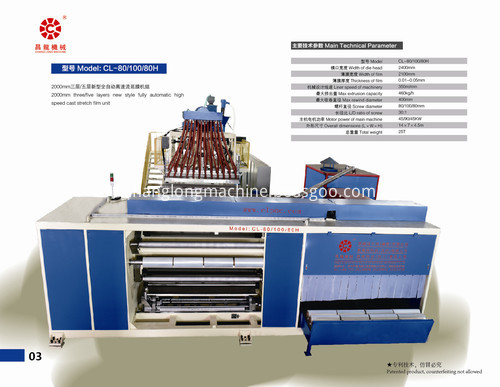
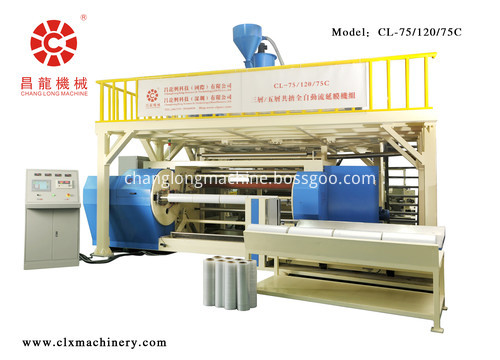
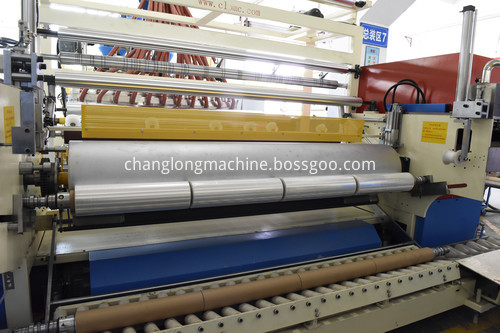
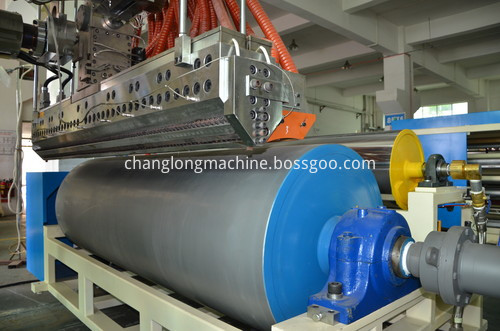
Produced Films
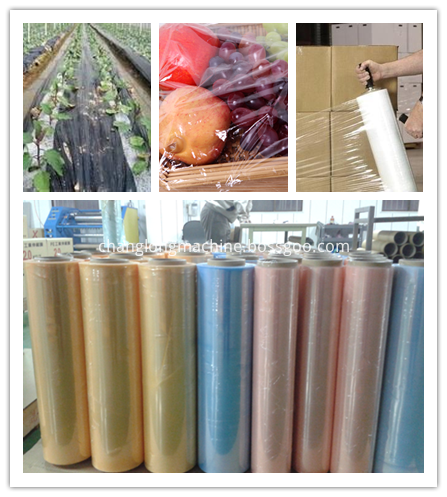
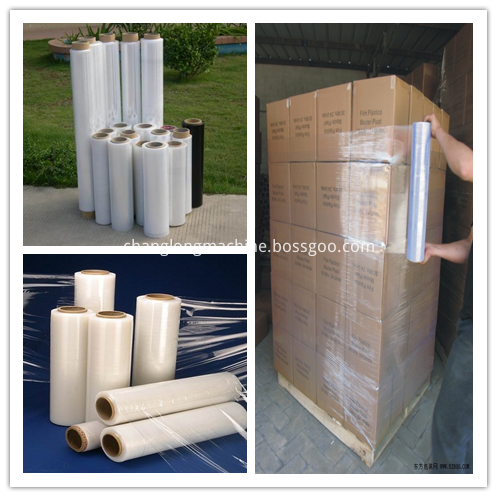
2000mm stretch film machine unit
2000MM Black Stretch Film Machine Unit,2000MM Hand Stretch Film Machine Unit,2000MM Plastic Stretch Film Machine Unit,2000MM Packaging Stretch Film Machine Unit
CHANGLONGXING SCIENCE & TECHNOLOGY (SHENZHEN) CO.,LTD , https://www.clxmachinery.com
